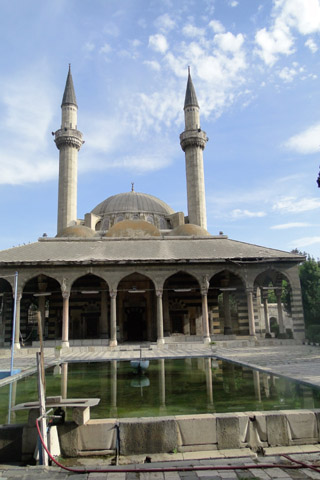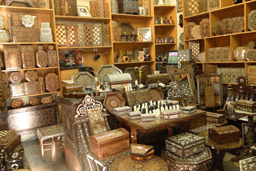
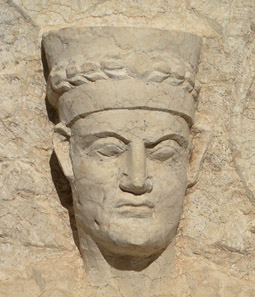
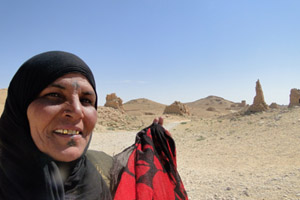
Day 09 Palmera , St Teckla's Monastary Damascus April 25, 2010 Sunday



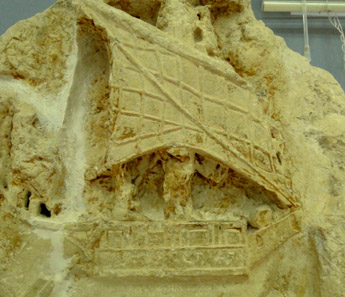

The city of Palmyra prospered with the trade coming on the camel caravans and from the Mediterranean Sea. The acknowledgement of the trade carved on the rock clearly explains the source of the wealth in this city .
The physical features of this sales lady in Palmyra , when compared with what we have seen in the museum, tells us that not much had changed in this region in terms of ethnic origins for thousands of years.
Funerary art

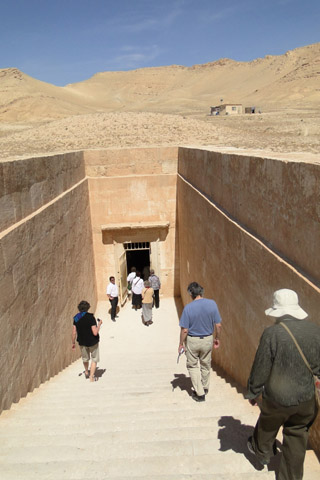 Outside
the ancient walls, the Palmyrenes constructed a series of large-scale funerary
monuments, which now form the so-called Valley of the Tombs, a 1 km long
necropolis, with a series of large structures with rich decorations. These
tombs, some of which were below ground, had interior walls that were cut away or
constructed to form burial compartments in which the deceased, extended at full
length, was placed. Limestone slabs with human busts (in Roman and Parthian
Iranian fashions) in high relief sealed the rectangular openings of the
compartments. These reliefs represented the "personality" or "soul" of the
person interred and formed part of the wall decoration inside the tomb chamber.
A banquet scene as depicted on this relief would have been displayed in a family
tomb rather than that of an individual.
Outside
the ancient walls, the Palmyrenes constructed a series of large-scale funerary
monuments, which now form the so-called Valley of the Tombs, a 1 km long
necropolis, with a series of large structures with rich decorations. These
tombs, some of which were below ground, had interior walls that were cut away or
constructed to form burial compartments in which the deceased, extended at full
length, was placed. Limestone slabs with human busts (in Roman and Parthian
Iranian fashions) in high relief sealed the rectangular openings of the
compartments. These reliefs represented the "personality" or "soul" of the
person interred and formed part of the wall decoration inside the tomb chamber.
A banquet scene as depicted on this relief would have been displayed in a family
tomb rather than that of an individual.
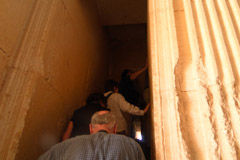
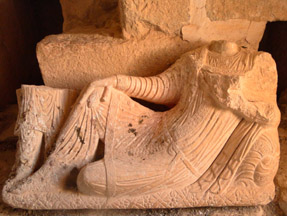 Archaeological
teams from various countries have been working on-and-off on different parts of
the site. In May 2005, a Polish team excavating at the Lat temple discovered a
highly-detailed stone statue of the winged goddess of victory Nike.
Archaeological
teams from various countries have been working on-and-off on different parts of
the site. In May 2005, a Polish team excavating at the Lat temple discovered a
highly-detailed stone statue of the winged goddess of victory Nike.
Recently, archaeologists in central Syria have
unearthed the remnants of a 1,200-year-old church believed to be the largest
ever discovered in Syria, at an excavation site in the ancient town of Palmyra.
The church is the fourth to be discovered in Palmyra. Officials described the
church as the biggest of its kind to be found so far — its base measuring an
impressive 51 by 30 yards. The church columns were estimated to be 20 feet tall,
with the height of the wooden ceiling more than 49 feet. A small amphitheater
was found in the church's courtyard where the experts believe some Christian
rituals were practiced.
On the way to DAMASCUS
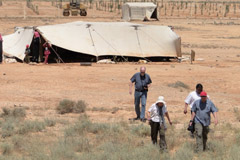
After we left Palmyra, we started experiencing the desert of Syria. The Syrian state is determined to change the fate of the people living in the desert. as part of this project, they have built irrigation channels and hired hundreds of nomad families for planting new orchards. We stopped at one of the tents. the first group ran down the ramp and visited the family. The slower members of the group noticed that there were scorpions defending their territories, we could not dare to challenge the scorpions. So some of us missed the opportunity of meeting this family.
Later on the bus we were told that the family had been living there for several months. they were assigned to plant and take care of 250 pistachio trees. As soon as the trees required no more personal assistance, they were going to move to another place. they are being paid by the government.
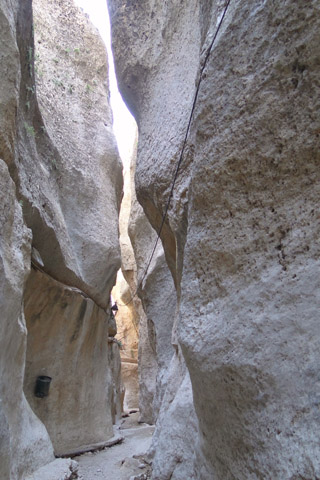
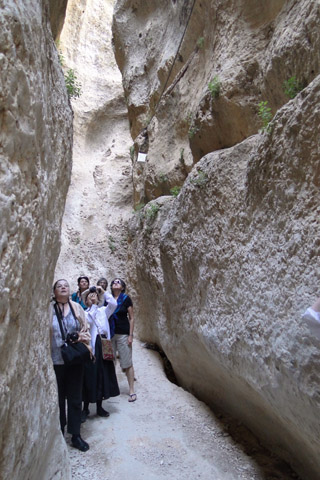
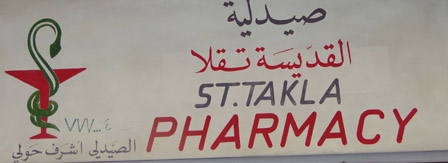
Our next stop is the monastery of Teckla . Teckla was one of the deciples of St Paul. In Iconia, upon the visit of St Paul, she had accepted the word of God and wanted to be the assistant of St Paul the people of Iconia were mad at her and they wanted to persecute her.
The beasts, most likely the lions, which were
suppose to kill her, had become her guardians. After this miracle, Teckla was
believed to be the protector of the ill people. Even today, the pharmacies like
to name their business by the name of this Saint of the 1st Century AD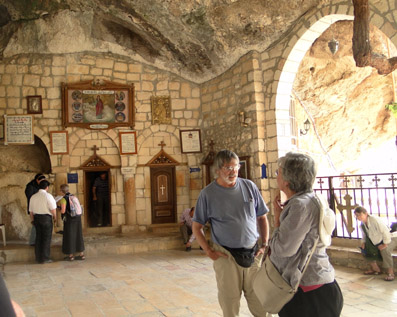
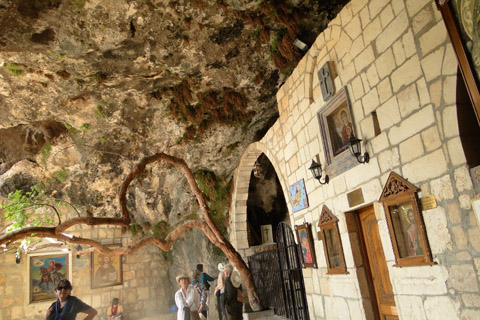
The capital of Damascus had been a very important city of the Ottoman Empire for more than 300 years. It did not surprise us to see the Ottoman Style mosques and Grand Bazaars in the center of the city. the inlayed wood and the tapestry glowing in the light of the setting sun gave us all the first impression of the city as an exciting one. tomorrow we will have more time to explore Damascus.
